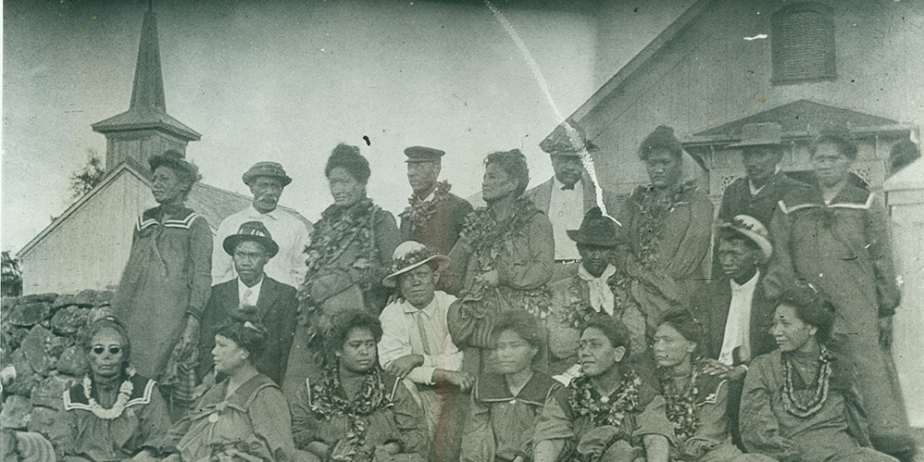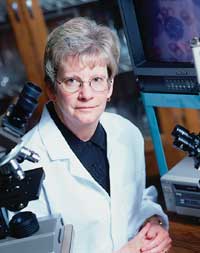New biographies acquaint another generation with the Prophet Joseph Smith.
In the pursuit of a post-Earth degree in celestial living, some may see novel reading as a time-wasting misdemeanor that will look bad on their mortal transcript. Such readers, I suppose, interpret the injunction to seek “out of the best books words of wisdom” (D&C 88:118) as “Thou shalt read only nonfiction.”
But reading fiction need not be considered a waste of precious mortal time. I believe that judiciously chosen fiction that is “virtuous, lovely, or of good report or praiseworthy” (A of F 1:13) and enjoyable can extend and enhance our mortal experience by expanding wisdom, increasing understanding, sounding caution, clarifying purpose, and building faith—and all for only $19.95!
Until recently, LDS audiences have generally ignored Mormon fiction. With the publication of his landmark nine-volume saga The Work and the Glory, Gerald N. Lund dramatically changed Mormon literary tastes, landscapes, and horizons. In his skillful retelling of the events of the Restoration and rise of the Church, as seen through the eyes of the fictitious Steed family, Lund established the historical novel as a genre congenial to Mormons.
Since Lund proved that a spoonful of fiction makes the history go down, other LDS writers have rushed to employ historical fiction as a means of bringing historical figures to life, rendering as fiction historical events from the Book of Mormon and the Old and New Testaments; portraying contemporary LDS life; and presenting LDS slants on the American Revolution, the Utah War, the Civil War, World War I, World War II, the Korean War, and the Vietnam War.
A high point in this procession of historical novels has been the two series by Dean T. Hughes, a BYU associate professor of English. He concludes his five-volume Hearts of the Children series with So Much of Life Ahead (Bookcraft; 429 pp.; $24.95). Hughes follows four Thomas cousins—Hans (in East Germany), Gene, Kathy, and Diane—in their personal struggles amidst the tumult of the ’60s and ’70s over the Civil Rights movement, ERA, Vietnam, and Watergate. Hughes’ honest probing of his characters’ problems within contexts of faithful-but-struggling Mormon lives makes this series, with his earlierChildren of the Promise series about the World War II era, the best, most truthful, and most realistic pictures we have to date of what it was like to be a Latter-day Saint during these time periods.
Two sisters, Marcella Huber Gallacher (BS ’81) and Kerri Huber Robinson (BS ’79), in A Banner Is Unfurled (Covenant; 390 pp.; $22.95) and its sequel, A Banner Is Unfurled: Be Still My Soul(Covenant; 419 pp.; $22.95), develop a series of historical novels from the family history, journals, diaries, and recollections of Ezekiel and Julia Hills Johnson (the authors’ third great-grandparents) and their 15 children. Set in 1828–34, these volumes enliven some early events of Latter-day Saint history, capture the fervor of the rising anti-Mormon antagonism of those years, and recount the individual conversion stories of the very real Johnson family, whose lives intertwined with those of Joseph and Emma Smith, Don Carlos Smith, Parley P. Pratt, Brigham Young, and other early Saints. Helpful chapter endnotes carefully differentiate between history and fiction.
In her imaginative Out of Jerusalem series, Heather Brown Moore (BS ’94) recasts events from 1 Nephi into historical fiction. In the second and third volumes, A Light in the Wilderness (Covenant; 319 pp.; $19.95) and Toward the Promised Land (Covenant; 284 pp.; $19.95), Moore continues her riveting treatment, begun in Of Goodly Parents (Covenant; 293 pp.; $19.95), of the exodus of Lehi and his family from Jerusalem to the Land of Bountiful and their eventual voyage to the Promised Land. Moore persuasively renders a rich body of scholarship about ancient life in Southern Arabia in wonderfully imagined fiction. She conjectures why it took eight years for the families to travel only 2,200 miles and creates interactions between Lehi’s family and peoples all along their journeys, from Arabia to islands in the Pacific Ocean. They are exciting, faith-centered, faith-enhancing historical novels.
In More than Conquerors: The Apostle Paul and Those Who Loved Him (Afarian Publishing; 341 pp.; $17.95), a rendering of the book of Acts and the epistles of Paul as historical fiction, Kathryn Afarian imaginatively depicts the life and times of the Apostle Paul against a rich backdrop of anthropological data (along with the requisite chapter endnotes). Phoebe, an on-looking participant and one of Paul’s converts, recounts his ministry in a decidedly LDS accent (baptisms for the dead, temple ordinances, and so on). Ronald G. Carter (BA ’57), in By the Dawn’s Early Light (Bookcraft; 608 pp.; $27.95), concludes Prelude to Glory, his nine-volume series of novels about the Revolutionary War and the founding of the United States
of America, with a well-researched and well-told account of the sea and land battles of the War of 1812.
Here, briefly noted, are several recent non-historical LDS novels, which look at the human experience as refracted by LDS lenses: Roger K. Terry (BA ’80), a senior associate editor at BYU Studies, has written God’s Executioner (Cedar Fort; 372 pp.; $15.99), surely the most entertaining LDS courtroom mystery yet. Cynical, unhappy, divorced, non-Mormon attorney Scott Fernelius (who is blessed with a teenage daughter with an attitude and a penchant for telling lawyer jokes) is the newly arrived public defender in fictional Kimball County, Utah. Scott is assigned to defend Tracy Parker, an exemplary Latter-day Saint, husband, and father of an Ensign-perfect family—as well as a confessed killer who claims innocence and insists on exoneration because he believes God told him to do it. In the ensuing trial, God and personal revelation go head-to-head with fallen man and mortal law and crescendo to a nail-biting climax. All of this makes God’s Executioner a gripping, laugh-aloud page-turner of a book, which I guarantee you’ll enjoy.
Chris Stewart, in The Second Sun (Deseret Book; 443 pp.; $19.95), volume 3 of his exciting series, The Great and Terrible, details ongoing battles in the war between good and evil that began in premortal life as described in the first volume of the series. In The Second Sun, Stewart uncovers Lucifer’s manipulation of cataclysmic events in Iran, Israel, and the United States that could jump-start World War III and usher in the last days. Whew!
Orson Scott Card (BA ’75), in Magic Street (Del Rey/Random House; 395 pp.; $24.95, $14.95 in paperback), shows once again that he is the master storyteller. With a story set in a real area of Los Angeles, the rest is magic/fantasy as only Card can conjure it. A fantasy book by Greg S. Park (BA ’93), Veil of Darkness, book 1 of The Earthsoul Prophecies (Bladestar; 532 pp.; $15.95), follows young Jase Fairimor as he heeds his ancient birthright and undertakes to rejuvenate the weakening “earthsoul” and give battle to dead evil spirits who have been refleshed to follow Dreadlord Throy Shadan in a final, decisive war. In Harold K. Moon’s (BA ’57) prize-winning novel, Ghost Coach (Bonneville Books/Cedar Fort; 170 pp.; $12.99), the narrator recounts classmate Lyle Sperry’s coming-of-age struggle to accept the challenge of his basketball-savvy English teacher, Belva Lowry, and make the basketball team in his junior and senior years at Heyburn (Idaho) High School. This is a 1940s novel about growing up in an uncomplicated age of innocence and unambiguous values. Sharon Downing Jarvis gets Mormon bishoping just right in Through Cloud and Sunshine (Deseret Book; 263 pp.; $14.95) and A Thorny Path (Deseret Book; 279 pp.; $14.95), volumes 3 and 4 in her Fairhaven Chronicles series about Jim Shepherd, a Mormon bishop (of the Alabama Fairhaven Ward) in the third and fourth years of his emotional, physical, spiritual, often funny, sometimes sad, and always deeply satisfying roller-coaster ride through his ministry.
Richard H. Cracroft is the Nan Osmond Grass Professor in English emeritus.
Cracroft’s Picks: Two Superb Poets
Before his death in April 2006, Leslie Norris (1921–2006) recorded Leslie Norris: Voice of the Poet (BYU, Center for the Study of Christian Values in Literature; $19.95). On this CD, produced and edited by English professor Charles Jay Fox (BA ’65), Norris reads 23 of his fine poems in his unforgettable voice. The texts of the poems are included, with “notes to the poems” by the poet and a biographical sketch by English professor Douglas H. Thayer (BA ’55). A native of Wales, Norris was a fellow both of England’s Royal Society of Literature and of the Welsh Academy. His poems and short stories won international awards and were published widely. For 20 years he taught literature and creative writing at BYU, where he was poet-in-residence and the Humanities Professor of Creative Writing as well as a beloved friend, teacher, and mentor.
Lance E. Larsen (BA ’85), in his most recent volume of poems, In All Their Animal Brilliance (University of Tampa Press; 78 pp.; $12), presents 50 poems that crackle with intense, rich images and startling invention and uncover a range of emotion and insight into human life that would take a novelist 200 pages to spin. Larsen, a professor of creative writing and the director of English graduate studies at BYU, savors earth life and enables the reader to relish it too by translating common experience into uncommon insight through rich poetic language. In the poem, “This World, Not the Next,” for example, Larsen brings his readers to empathize with Adam and Eve when God “pled with them to return / to a savory forever of his making / but it was this world, with its tides and machinery / of sweet decay, they learned to love” (p. 5).









